I went to the editorial department of the information magazine "Dakapo" which understands modern time in three hours
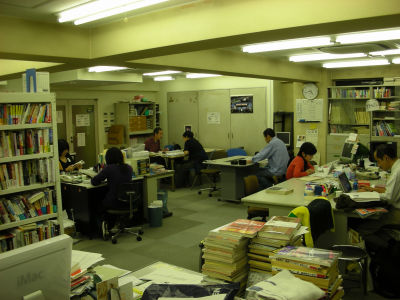
A familiar magazine "Dakapo" with catch phrase "Information magazine where modern time understands in 3 hours". The genre to be covered in the magazine is quite wide from politics and economics to literature or subculture, and the information is characterized by being tightly packed in that compact book. Even the readers of GIGAZINE do not have someone who also serves as a Dakapo reader?
That's why this time we are interviewing the Dakapo Editorial Department. Because it was something that was interviewed by Da Capo ... .... Incidentally, Da Capo is the longevity magazine of the 25th anniversary of the first publication this year, and it only passed over the raging waves of the times again, and it was able to hear various interesting stories.
· Inside the magazine house
The appearance of the building that Dakapo Editorial Department is in. There is an editing department on the second floor here. By the way this is the third annex of Magazine House.
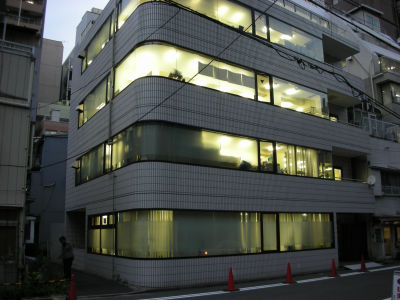
The main building is here. The fact that there are three annexes means that there are four buildings together.
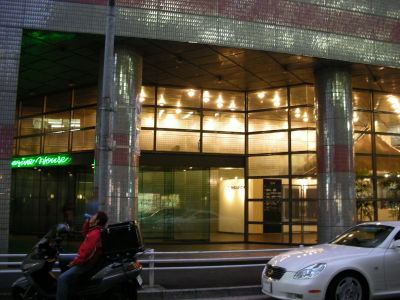
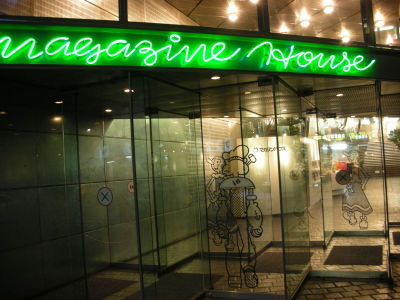
The state of the editorial department looks like this. Books are packed full of books.
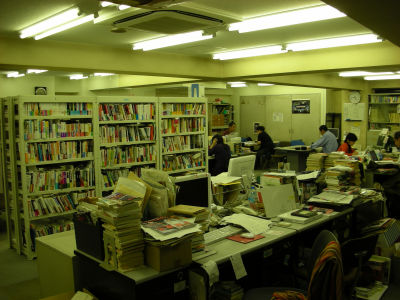
Somehow the national flag of Jamaica.
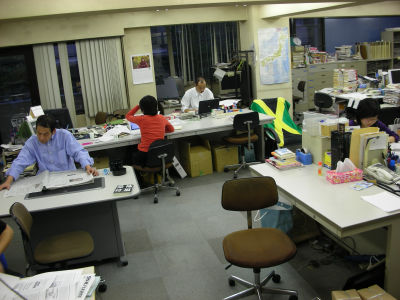
The copy machine is settled.

Fried link. Let's take a cup round and round.

· What kind of project was DaCapo born in the first place?
GIGAZINE (hereinafter abbreviated as G):
How was a magazine called Da Capo born?
Da Capo (hereinafter abbreviated as D):
Because the monthly "Bungei Spring Autumn" is heavy, I heard that there are people who are reading and putting them in their pockets. When Dacapo was first launched, it was Da Capo who started making gravure of magazines and making magazines compactly organized information. The first issue was only one feature, and the other was scrap of articles. As I said in the subtitle of the magazine, "As the modern day understands in three hours," it was a feeling that the information was organized and reedited. For this size you can also enter into a women's handbag. And now it's about 25th anniversary to welcome 600 issue.
· Is it issued on the first and third Wednesday of every month since long ago, has it changed at some point?
G:
It is issued twice a month from this time.
D:
It has been since the beginning. The basic style has not changed since long ago. Apart from manga, the wordbooks and the like are exactly the same now. Although the layout has changed somewhat.
G:
Da Capo is issued twice a month, why is this twice a month?
D:
Back then, twice a month was prevalent. And if it is a weekly magazine, it will be late laps, and if it is once a month the cycle is too late. Nobody will read weekly magazines last week. Because the information is being processed, there are also circumstances such as when the timing to come out is necessarily the next week.
· The catch phrase at the time of the first publication in November 1981 is "Little magazine where the contemporary themselves are compressed", the catch phrase in 2006 which will be 25th anniversary of the first publication "Information magazine where modern time can be known in 3 hours". How did you decide this?
G:
What is the timing of this catch phrase change?
D:
It is a feeling that it changes if you want to change when the editor-in chief changes. Traditionally the editor-in-chief is supposed to think logos and other things. Although there are opinions from the advertisement side, basically I take care of the concept at the time of launch.
· What kind of stuff are you aiming for in the editorial section?
G:
Speaking of Da Capo, it is a magazine that handles quite a wide range, but will it increase if a new genre comes out in time with the times?
D:
I will increase it. There was not IT system something ten years ago. Since Dakapo is not a magazine to be recommended and pulling, it is a point of view to see the flow of the world, why it will be, why the opinion differs, and considering the difference. Another thing is that information is flowing too much, so you only gather the necessary information.
G:
That's why I call it "compressed" or "little". It is a feeling that it is a "magazine" that is truly compiled.
D:
In a sense it is "Anchiko magazine", trying to take only the important part. Now that information is overflowing, it may be just right. There used to be only 84 pages in a long time now, 130 pages now, 162 pages in an oversized issue.
· Dakapo released on October 18, 2006 is 594, but what is a memorial event etc in 600?
G:
Is there a memorial event?
D:
I guess you are thinking now. As soon as it becomes the next editor-in-chief, the magazine will become business-oriented. Please also listen to the new editor-in chief.
· How many staff are there in total (including reporters, system related, designers, bytes)
G:
It will be a regular question from around here, but how many staff are there?
D:
There are six employees. Free is about 30 people including all part-time jobs.
· A rough general schedule of the day and a one month schedule until completion of the magazine
Dakapo Board. The schedule seems to be managed by the white board.

G:
I think that it is slightly different from the schedule of ordinary magazines because it is issued twice a month, but how do you allocate time?
D:
First of all we had interviews and meetings, firstly layout, then by submission and proofing, we have taken quite a few days. The editor-in chief allocated his charge about a month ago, moved from there and put the manuscript one month later. Of course, each of them voluntarily implements a vision from ahead.
G:
What is the general schedule of the day? Is it determined to a certain extent, or is it individual's discretion?
D:
There are quite a lot of discretionary discretion. It's like being out around morning, or being undergrading. I do not know when it will take until midnight. Work will be a discretionary labor system.
· How do you like lunch?
G:
What do you do when you eat meals?
D:
There is a company cafeteria. It is from 12 o'clock to 14 o'clock in the day and from 17 o'clock in the evening at around 19:30, so many people eat there. If not there seems to be eating near here.
G:
What kind of items are there in the company cafeteria?
D:
There are menus over there, but they are rich in variety. I was second or third in the mass eatery championship. It is three stories near the headquarters, there are three set menu in the day, there are also salad bars etc. It is full and it seems that free people are also using it.
Menu of the employee cafeteria.
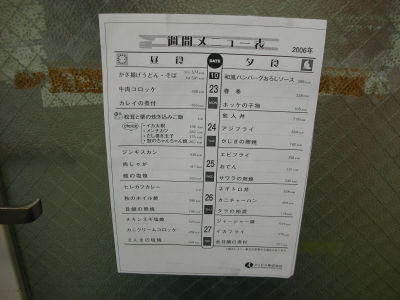
G:
It is amazing that such a restaurant is properly located.
D: At the time of foundation, there was no cafeteria, but when it comes to late night labor, it was a tradition that it was a properly decided company to take a ryokan and have a big dinner and eat it. Free and part time jobs are all free of day and night, and in the old days there were also dormitories so money may have been accumulated, now there is no dormitory, though (laugh)
G:
I am enriching enough. Is it a company policy that such welfare benefits are solid?
D:
I guess there is a thought of the founder "I will not let you feel hungry." It was not the concept of welfare welfare, it was that kind of atmosphere.
G:
You do not have to worry about what you eat. It is amazing ...
D:
People from the printing laboratory also come and the use of stakeholders is welcomed. I am also eating officials. Meal bills, employees and people outside the company are also free. Every Wednesday curtain lunch box is quite luxurious and popular.
· Bragging the editorial department
G:
It is a boast that the company has a solid dining room, but is there anything else besides that? Even the appealing point that this is not to be defeated to other editorial department is fine.
D:
The height of age and so on (laugh). Because there are many veteran editors, it is likely that the editor-in chief can do it without having to say various things. Even editors have experienced editors. Since we are a functional employment system, the editor-in chief may appear on the scene. Essentially everyone participates, if you say a few elites you can hear it, but you have to do anything. I think newcomers are serious, but I can train while I am here.
G:
It is easy to say that it is easy to understand.
D:
The other thing is that the frontage is wide. The editorial department, which anyone can enter, can bring in projects and bring in illustrations.
G:
It is quite fun because the editorial department is not that easy.
· Episodes and legendary episodes that struggled with writing articles and coverage
G:
Do you have any episodes or other things that you had troubled with in the past?
D:
There is no refusal of the interview. There are many teachers and associate professors of the university, associate professors, school teachers, and salaried workers in their twenties and thirties who are in the middle of the middle, so it is easy to go without trouble because they are familiar with the fans of the interview and the youth.
G:
It is envious. Da Capo goes into the category of fairly longevity magazines quite a lot, do you have any tricks left so far?
D:
What seems to be inconspicuous quietly (laugh). It is small, the price is also cheap, maybe there was a presence when we wanted to read the necessary information as much as we needed. I think that preservation is high after all. It is not buying, reading and throwing away, but I think you will want to retrieve it for a while and read it.
· Assumed readers
G:
I think that there are many readers of Dakapo, but what is the reader layer assumed by the producer?
D:
For example, it is about 3 years old female magazine, it is aiming for a very narrow range. In the case of Dakapo, since the age bracket is wide, we are interested in people like intellectual curiosity and wanting to know about the world properly. Specifically, it would be nice to think of it as a high school student until 80 years old. It is a female reader who is pursuing now.
· Tips for browsing magazines
G:
Do you have any reading method that you do not want this kind of reading?
D:
I do not particularly have such a thing, if you open it from where I want to read it. For example, people bought under the special feature can read from the feature and there is no order to the readers.
·Plan from now on
D:
It is supposed to be renewed aiming for a magazine with reflexive nature with a more era sense in the 25th anniversary. Specifically, we will strengthen information useful for businessmen, businesswomen who are in their 20s to 30s. Renewal is the issue released on December 6, and we have many new series. Every time, a famous journalist appears "Journalist Introductory", the first time, Mr. Soichiro Tahara will appear. In addition, Economic Journalist Seiichi Takabe's "Business Forefront Report", Color page on the back side of the development of hit products "Da Capo Commodity Studies", Other Information Column page also includes IT, Money, AV, Of the first person changes shape to convey the latest situation. There is no doubt that it will be a fulfilling magazine more than ever. Please take a look, please take a look.
* We did the interview in October.
Related Posts:
in Interview, Posted by logc_nt







